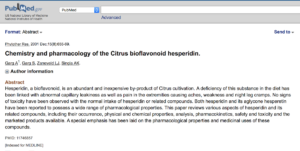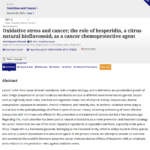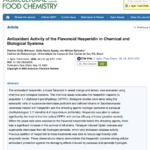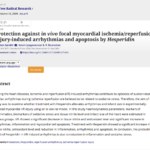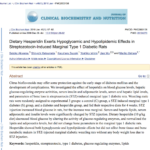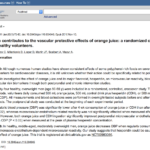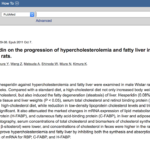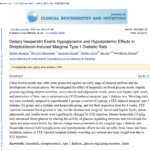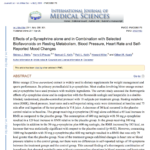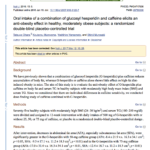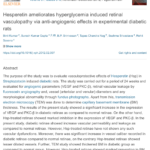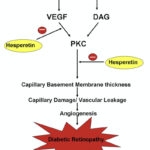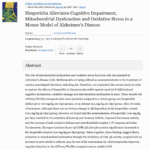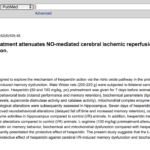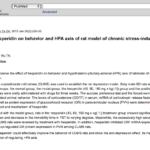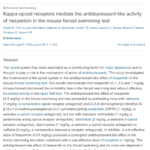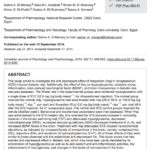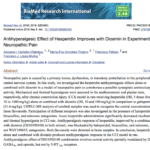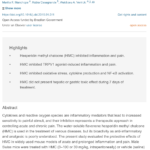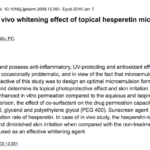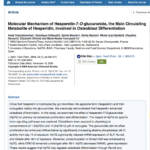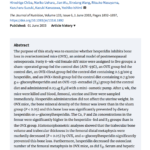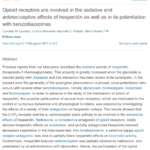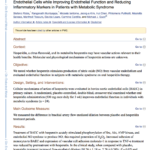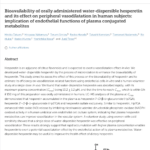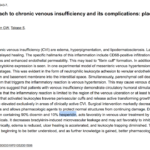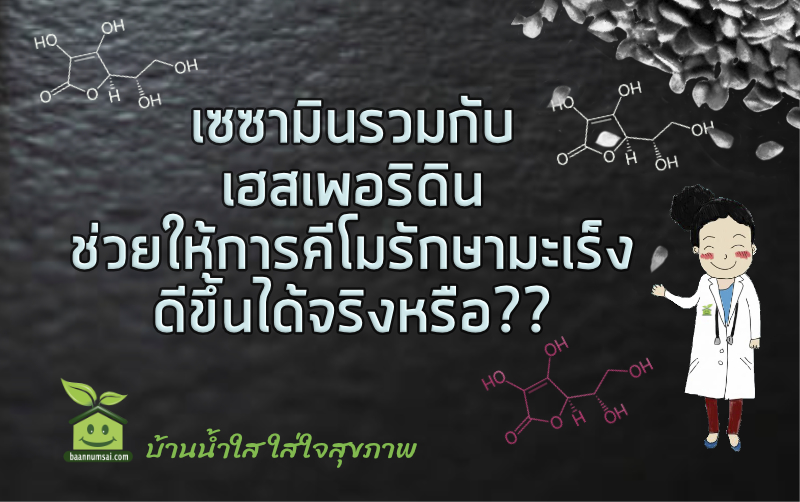Top 17 Proven Health Benefits of Hesperidin
Have you ever thought eating oranges and lemons could be so healthy?
Hesperidin, a flavonoid found in orange peels, has many benefits. They include protecting the heart and brain, reducing diabetes symptoms, and preventing cancer. Listed below are the other noted health benefits of this glycoside. We have compiled a cookbook filled with delicious recipes containing the world’s healthiest foods
Introduction
Hesperidin is a bioflavonoid glycoside. It is a sugar-bound form of the flavonoid hesperetin.
Citrus fruits, mainly oranges and tangerines, contain hesperidin.
Upon consumption, hesperidin is degraded by gut bacteria in the colon.
Another form of this flavonoid is hesperitin. Many studies use hesperitin instead of hesperidin. This is because drug administration is more efficient than consuming very high amounts of hesperidin.
Health Benefits of Hesperidin
1) Hesperidin Works As an Antioxidant
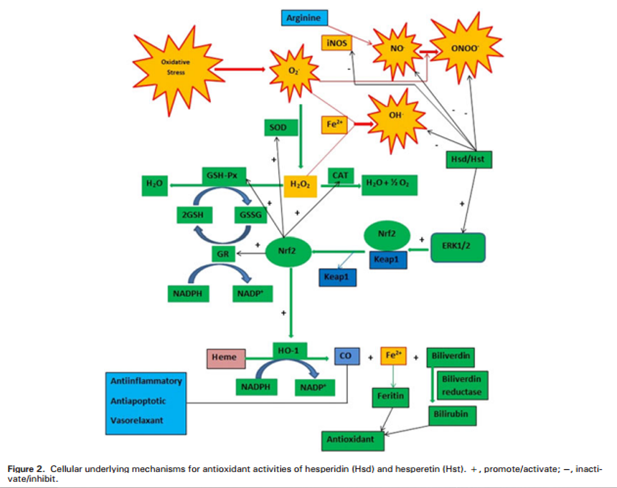
Oxidants, such as hydrogen peroxide and other chemicals, cause oxidative stress. Oxidative damage causes disorders such as cancer and heart disease. Antioxidants help protect against oxidative stress.
Both hesperidin and hesperitin function as antioxidants. They both have radical scavenging activity. This means that they stop free radicals from damaging cells.
Hesperidin neutralizes reactive oxygen species. This protects DNA, proteins, and tissues from radiation, inflammation, and toxins. It also prevents oncogenes from causing cells to become cancerous. Oncogenes are genes that can cause cells to transform into tumor cells.
Hesperidin had significant radical scavenging activity in red blood cells. It stopped hydrogen peroxide from damaging the cellular membranes of blood cells. It also protected against DNA damage.
2) Hesperidin Helps Prevent Cancer
Reactive oxygen species and oxidative damage are involved in cancer development and progression.
The antioxidant activities of hesperidin help prevent cancer. It neutralizes reactive oxygen species to protect against oncogenes. Oncogenes are genes that cause cells to transform into tumor cells.
Hesperidin significantly reduces oxidative stress induced by radiation. In rats, hesperidin injection protected them from gamma-radiation.
In rats, satsuma mandarin juice enhanced with hesperidin significantly reduced the incidence of colon cancer in rats.
Orange and satsuma mandarin juice also reduced lung cancer by 29% in rats.
In male rats suffering from colon cancer, hesperidin administration stopped cancer cell growth. It also increased cancer cell death in the colon.
Additionally, hesperidin stopped tumor growth and invasion in lung cancercells. It stopped blood vessel formation, which contributes to tumor growth.
3) Hesperidin Is Anti-Inflammatory
Inflammatory mediators include iNOS and COX-2 and inflammatory cytokines.
Hesperidin and its metabolites lower inflammation. In cellular models of inflammation, hesperidin administration suppressed iNOS protein levels and COX-2 enzyme levels.
It also reduced inflammatory cytokine production in rats.
4) Hesperidin Protects the Heart
Many factors affect heart health. Oxidative stress, high fat, high blood pressure, and high cholesterol all contribute to an unhealthy heart. Hesperidin administration helpswith all these symptoms and protects the heart.
Hesperidin Protects Heart Tissue
Daily oral hesperidin administration at 100 mg/kg to old rats for 90 days benefited heart tissue. Hesperidin protected against oxidative stressand increased antioxidant levels. It also lowered inflammation.
Hesperidin Helps Control Blood Sugar
Diabetes also contributes to heart disease. You can protect the heart by lowering your glucose levels.
Hesperidin may increase adiponectin, a protein hormone that helps control glucose and fat energy production. Increasing adiponectin helps reduce fat accumulation. This improves blood vessel conditions and improves circulation in the heart.
Hesperidin Reduces Blood Pressure
Over the course of four weeks, a combination of hesperidin and orange juice helped lower blood pressure levels in overweight males.
Hesperidin May Lower Cholesterol
In rats fed a high cholesterol diet, hesperidin supplementation reduced total cholesterol levels. It may help prevent high cholesterol by inhibiting the formation and absorption of cholesterol.
However, hesperidin does not show the same effects in humans. In men and women with high cholesterol levels, hesperidin and naringin (another citrus flavonoid) administration did not lower cholesterol levels.
5) Hesperidin Helps with Fat Loss
Hesperidin may increase adiponectin, a protein hormone that helps control glucose and fat energy production. Increasing adiponectin helps reduce fat accumulation. This helps to prevent obesity.
Hesperidin and p-synephrine (part of bitter orange extract) also increase the metabolic rate. The metabolic rate is the rate at which the body burns calories.
Glucosyl hesperidin (G-hesperidin) is a water-soluble form of hesperidin. A combination of G-hesperidin and caffeine reduced body fat in humans. Itsignificantly reduced stomach fat, body weight, and BMI in people with a moderately high BMI. This combination may help treat or prevent obesity.
6) Hesperidin May Protect Against Eye Damage in Diabetes
High glucose levels cause diabetes, and eventually diabetic retinopathy. It is a disease of the retina that causes vision impairment and loss (R).
Protein kinase C-β (PKC-β) and VEGF damage blood vessels. They also contribute to leakage in the retina (R).
Daily oral administration of hesperidin for 12 weeks mildly decreased blood glucose levels in streptozotocin-induced diabetic rats. It also stopped PKC-β and VEGF activity. This protected the rats from vision impairment (R).
7) Hesperidin Protects the Brain
Hesperidin neutralizes reactive oxygen species. Its antioxidant properties protect the brain from oxidative damage.
D-galactose is a sugar that causes oxidative stress in the brain. If present in the nervous system, it kills nerve cells by disrupting mitochondrial function. In rats, pre-treatment with hesperidin and curcumin protected the brain against D-galactose. It reduced cognitive problems by preventing nerve cell death.
In mice models of Alzheimer’s disease, hesperidin administration reduced symptoms of the disease. A dose of 100 mg/kg per day of hesperidin reduced learning and memory problems. It also improved physical activity.
Finally, hesperidin may be able to protect the brain during strokes. A dosage of 50 mg/kg of hesperidin daily for 15 days helped with brain function in male rats. It reduced inflammation, and also reduced free radicals in the brain.
Hesperidin also helps protect against memory loss in rats that suffered from stroke. Pre-treatment with hesperidin and L-arginine slightly protected against memory loss.
8) Hesperidin Works As an Adaptogen and Antidepressant
In the rat model of stress-induced depression, hesperidin may be able to reduce depressive symptoms. Three weeks of oral administration improved rat behavior in this study. This may be due to the control of the HPA axis, which is a stress response system.
The opioid system is also a contributing factor for major depression. Hesperidin possessed antidepressant-like properties and positively interacts with the opioid system. It worked with opioid receptors to reduce depressionsymptoms in mice.
Hesperidin also has an antidepressant effect in diabetic rats. By lowering glucose and inflammation levels, it enhanced brain function and reduced depression symptoms.
9) Hesperidin Reduces Stress and Anxiety
Stress causes health problems. It increases oxidative damage in the body, also activating the HPA axis, causing changes in the body’s homeostasis (balance). Chronic stress causes anxiety and mood disorders.
Hesperidin’s antioxidant activity helps reduce stress, therefore protecting health. It prevents oxidative damage and helps to stop anxiety.
10) Hesperidin Relieves Pain
Nervous system dysfunction causes a condition called neuropathic pain. Injured nerve cells contribute to pain and inflammation.
Hesperidin administration helped reduce pain in mouse models of prolonged inflammation and pain. It reduced inflammation by inhibiting inflammatory cytokine production by stopping NF-κB activity.
Hesperidin and diosmin (another flavonoid) administration also decreased pain in rats. The combination of these flavonoids helped protect nerve cells (R).
11) Hesperidin Helps Treat Allergies
Immunoglobulin E (IgE) provokes allergic reactions by releasing histamineand causing inflammation. In humans, administration of both hesperidin and hesperitin suppressed IgE’s effects. It inhibited histamine release and stopped Th2 cytokine secretion.
Oral ingestion of hesperidin in mice helped stop allergic reactions. It reduced the responsiveness of the airways to antigens. This suggests that it may help reduce asthma symptoms.
12) Hesperidin As a HemorrhoidTreatment
A mixture of three different flavonoids aided in the treatment of hemorrhoids. Hesperidin, diosmin, and troxerutin helped reduce hemorrhoid symptoms.
Hemorrhoid patients reported less pain, swelling, and bleeding after 12 days of treatment. They also used fewer painkillers after the flavonoid administration.
13) Hesperidin Enhances Skin Health
Topical hesperidin treatment in mice helped with skin health. It kept the skin barrier at a balance, and also stimulated skin cell production (R).
Additionally, hesperidin protects the skin from radiation. A compound called hesperidin methyl chalcone helped stop oxidative damage in mouse skin cells. It reduced free radicals in a mouse model of UV radiation, and reduced inflammatory cytokine production.
Topical hesperetin may also be an effective skin whitening agent.
14) Hesperidin Promotes Bone Health and Prevents Osteoporosis
Hesperidin administration enhances osteoblast formation. Osteoblasts are cells that help with bone formation.
Hesperitin-7-glucuronide is the main circulating form of hesperidin. Its administration in rats helped increase bone cell formation.
Estrogen deficiency during menopause causes bone loss and osteoporosis. Estrogen replacement therapy prevents bone loss; however, it may cause adverse effects like bleeding and cancer.
Hesperidin may improve bone energy proudction. It prevents bone loss caused by estrogen deficiency (R).
In female mice, hesperidin supplementation prevented bone loss in all three areas of the femur. Osteoclasts are bone cells that break down bone tissue to release minerals. Hesperidin decreased the number of osteoclasts in the bones (R).
In addition to preventing bone loss, hesperidin did not have any negative effects on the uterus. However, the dose of hesperidin used in the study was much higher than the usual daily intake. It is unlikely for someone to consume that high of an amount in a normal diet (R).
Androgen deficiency can also cause bone loss. Male mice fed a diet with hesperidin had less bone loss compared to mice fed a normal diet.
15) Hesperidin May Have Sleep-Enhancing Properties
Hesperidin administration may help enhance sleep. It also has sedative properties. Its sedative properties might come from its ability to activate opioid receptors.
However, its sedative properties are only significant if it is injected into the body at a high level. Oral intake of hesperidin might not have the same effects.
16) Hesperidin May Improve Circulation
Oral administration of both hesperidin and hesperetin may increase blood flow. Daily intake of 500 mg of hesperidin daily for three weeks in metabolic syndrome patients increased blood flow. This is due to the widening of their blood vessels.
Additionally, 150 mg of a water soluble form of hesperidin improved blood flow in women.
17) Hesperidin Helps Treat Chronic Venous Insufficiency
High blood pressure in the veins causes fluid leakage. During chronic venous insufficiency, the lymphatic system becomes overwhelmed and causes edema (swelling) and ulcer formation.
This activates a white blood cell inflammatory response. The inflammation causes further deterioration to the veins.
Daflon is a mixture that contains 10% hesperidin and 90% diosmin (another flavonoid). Daflon administration inhibits the inflammatory response and decreases fluid leakage from the veins.
Diosmin and hesperidin inhibited free radical synthesis. They reduce swelling and accelerate ulcer healing. All of these contributed to the treatment of chronic venous insufficiency.
FDA Compliance
The information on this post has not been evaluated by the Food & Drug Administration or any other medical body. We do not aim to diagnose, treat, cure or prevent any illness or disease. Information is shared for educational purposes only. You must consult your doctor before acting on any content on this post, especially if you are pregnant, nursing, taking medication, or have a medical condition.
Source: www.selfhacked.com



